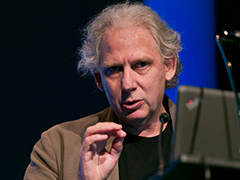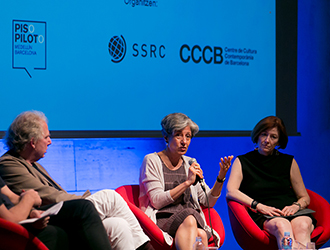The architect and urban planner talks about what public space is and how to interpret it as a whole within a wider network. His favourite public space is in northern Italy, the main street of Vicenza, any afternoon, when it is full of people walking around.
Shared Spaces recorded this conversation with Richard Burdett in July 2015 when he visited the Centre of Contemporary Culture of Barcelona (CCCB) in order to take part in the debate “The Possible City: Between Urban Planning and Democracy” together with Diane Davis and Teresa Caldeira. The debate was part of the cycle “The Possible City”, which was jointly organised with the Social Science Research Council of New York on 2 and 3 July this year. Other speakers in the cycle were Richard Sennett and Ira Katznelson.
Burdett begins by explaining how public space is defined. As an urban planner, he rejects the idea that public space exists in itself, beyond the buildings and elements that comprise it. For him, it is the glue that holds together a whole series of buildings, uses, people and activities. Hence, he never thinks of a specific space defined by certain axes and limits but about the space as a whole, including its presence as part of a greater network.
As for his favourite space, Richard Burdett thinks about connectors that people use not only to go from A to B, but to move more slowly. He refers to Vicenza in northern Italy, and its main street which is full of shops and cafes and crowded with people in the afternoon. People go out to enjoy the particular air of the place, agreeably caressing one’s skin. He thinks that somewhere like this has the features necessary for being a good public space, and cites Richard Sennett when explaining why this is a pleasant place, suggesting that one has the luxury of being alone in the crowd while also really enjoying this collective experience.




